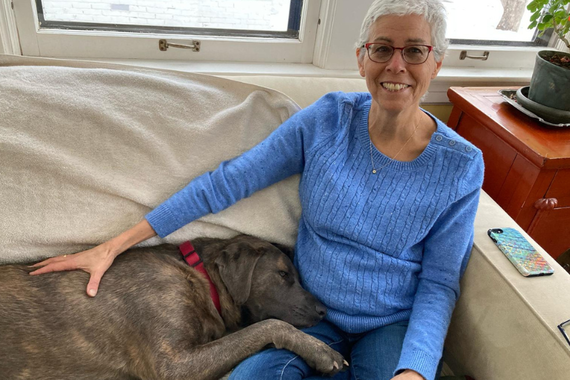Rethinking Race: The Sociology of American Indian Identity
Much of Associate Professor Enid Logan’s past research has been on blackness and the African American experience. However, in one of her latest projects, she shifts to a different, if parallel, terrain: American Indian racialization.
Indelible Blackness and the Disappearing Indian
“Indigenous people have been defined very differently than African Americans in the US,” says Logan, “and these differences really highlight the degree to which race is, and always has been, a fundamentally social construct.” Logan brings up the rule of hypodescent, or “one-drop rule,” which applies to people of African ancestry in the US.
“According to this logic,” she states, “if a person is known to have any West African ‘blood’ or ancestry, then they have been socially and legally defined as black.” People of African descent were desired fundamentally for their labor, and hypodescent expanded the number of people considered to be permanently unfree laborers, and later, exploitable second-class citizens, into perpetuity.
Logan states, “Indigenous people, on the other hand, have faced a fundamentally different dynamic of racialization in the US, as they needed to decrease in number, or disappear entirely, in order to justify the expropriation of their land.”
The Blood Quantum Principle
Native Americans have been defined (first by settler society, and subsequently to varying degrees and in different ways by many tribes themselves), according to the principle of “blood quantum”—which in many ways is the opposite of the rule of hypodescent. “On the one hand,” says Logan, “you have African ancestry, understood as some sort of indelible ‘stain’ that can never be erased, never be diluted. But indigenous ‘blood’ and identity are understood to be always disappearing.”
To explain this further Logan poses this thought experiment, “Consider how many ‘whites’ in the US can (and do) claim some indigenous ancestry, and still very much be considered white. Having a black ancestor, on the other hand, means that person is understood to be ‘black’ or at least to be part ‘black’—definitely not fully white.” Indigeneity can be fully absorbed into whiteness in ways that blackness cannot. “And these differences have nothing to do with ‘skin color’ or ‘phenotype,” Logan insists, “they’re all about the originating relationship of different peoples to the settler-colonial project.”
To be recognized as an Indian by the US government implies some sort of recognition (or potential recognition) of rights to resources like water, fishing, and hunting; specific religious and burial practices; some kind of educational and health care services; and today in some cases, to casino wealth. But historically, by far the most important thing that indigenous identity has implied is some sort of potential claim to the territory or to land. And these collective claims threaten the material and ideological integrity of the US as a nation.
The regime of racialization that applies to Native American people in the US (and to the tendency for indigeneity to “disappear”) corresponds to the originating drive to expropriate their land, which Logan refers to as “the imperative of dispossession.”
Who is a “Real Indian”?
Today, to be officially “counted” as Indian, indigenous people must be enrolled as a member of one of a set number of tribes recognized by the federal government. Furthermore, in order to be eligible for enrollment in one of the recognized tribes, indigenous people must have a direct ancestral tie to an individual listed on one of a series of registers, or “rolls,” established by the government at the close of the frontier era. These rolls, such as the 1830 Dawes Rolls, played an important part in ending collective landholding on the part of tribes and in dramatically restricting tribal membership.
Also, to be enrolled in a recognized tribe today, a person must be able to prove that they have a “blood quantum” (or blood tie) to a recognized ancestor of no less than, say 25 percent Ojibwe, or Navajo, or Mohawk. Any less than the minimum threshold and their status as an indigenous person is invalid. And as time goes on, then, the amount of indigenous “blood” or the number of “real Indians” in the population will almost inevitably decrease.
“If an enrolled tribal member was to have a child with a nonIndian, or with someone from another tribe, or with a “nonenrolled” person from the same tribe, or even with an enrolled person of lesser blood quantum, their child’s blood quantum would decrease, and they would likely be ineligible for tribal enrollment,” Logan states. “The mechanisms for the disappearance of indigeneity are multitudinous.”
Historically, indigenous identity has implied some sort of potential claim to the territory or to land. And these collective claims have threatened the material and ideological integrity of the US as a nation. As the number of “real Indians” decreases, via blood quantum and other means, historically, and the legitimacy of the US as a nation-state is increased.
These processes, established in an era long passed, have important implications for indigenous racialization, indigenous life, and national identity in the US today. The questions of who is considered a ”real Indian” and what indigeneity implies culturally, politically, and legally have been at the center of numerous contemporary conflicts.
In recent years, indigenous people have asserted numerous collective claims over expropriated resources including land, waterways, fishing and hunting grounds, religious and burial practices, and human remains (as the remains of indigenous people have often been displayed in museums or taken as objects of scientific research). Issues of identity and sovereignty have also figured at the center of debates over the names of sports teams, mascots, bodies of water, other public sites, and art installations, as indigenous people have denied the right of the settler state to dispossess them of their names, territories, histories, and traditions, and refused to be relegated to the past.
Moving American Indian Racialization to the Center
Logan explores these and other issues in a working paper entitled, “American Indian Racialization and the Sociology of Race.” In the article, she “calls for the field of sociology to take up indigeneity and the experiences of Native people as central categories of analysis,” arguing that “American Indian racialization should move from the extreme margins of sociological understandings of race to the very center.” “Indigeneity,” she writes, “must be understood as foundational to US constructs of race and nation.”
Logan begins the article by critiquing the relative invisibility of indigenous people in the discipline of sociology, and in the subfield of race studies in particular—which she describes as “a process of ‘absenting” that mirrors the absenting of Native people from the self-legitimizing narrative of the settler state.
She writes that as indigenous people have been largely invisible in the US sociology of race, so has the issue of race has been largely sidelined in indigenous studies. A number of scholars working in the area, she writes, “have argued that using race to understand the experiences of American Indian people is insufficient, inaccurate, or problematic.”
“While I understand, and in fact draw upon, some of the bases upon which this critique is made,” Logan says, “I would argue, following a number of different authors, that race and racialization are crucial paradigms for analyzing the uses and functioning of indigeneity in the United States.”
In the rest of the article, Logan seeks to theorize Native American racialization through the lens of sociology. In doing so, she draws upon an array of scholarly literature; bringing in insights from fields such as history, Native American studies, geography, and anthropology, where indigeneity has received much more scholarly attention; the well-developed literature on indigenous people in places such as New Zealand, Canada, and Australia, and excellent sociological scholarship on race.
Pillars of Dispossession
Along with graduate student Brieanna Watters, Logan posits that indigenous racialization can be conceived of as being oriented around a series of key theoretical “pillars” or dimensions of dispossession.
The pillars that they have identified, include, at present: “1) the persistent logic of elimination and erasure, including renderings of Native American people as people of the past; 2) the biopolitical management of indigeneity through the mechanisms of blood quantum and other techniques of bodily discipline; 3) the centrality of land and the dynamic of dispossession; 4) the uses of American Indian cultural appropriations in the production of white racial and national identity, and; 5) the simultaneous existence of American Indians as ‘raced’ people and as members of sovereign nations, with distinct historical and political relationships to the settler state.”
A Timeline of Racialized Indigeneity
Logan is also working to develop a “timeline” or “periodization” of what she refers to as “the production of racialized indigeneity in the US from the first contact through the present.” This timeline, she writes, “will parallel the sociological periodization of black/white race relations (i.e., slavery, Reconstruction, Jim Crow, civil rights, the present), and will be crucial to the development of critical race scholarship and teaching on indigeneity.”
Logan is particularly interested in drawing parallels between slavery, anti-blackness, and black racialization, and the history of settler colonialism, blood quantum, and the racialization of indigenous people. “How were these processes interconnected,” she asks. “How did they rely upon, or reflect, or reinforce each other?”
“We are so used to thinking of race in terms of skin color, or prejudice, of thinking about slavery, only, as being foundational to the construction of race in the US, of conceiving of black, Native, Latino, and Asian racializations as separate projects, of naturalizing racial inequality today and in the past,” she states. “In all of my work, in my teaching, in my research, in my writing, I have been trying to change all of that.”
“I want to produce good sociological theory on race,” she writes, “and help to ‘decolonize’ the academy.”



